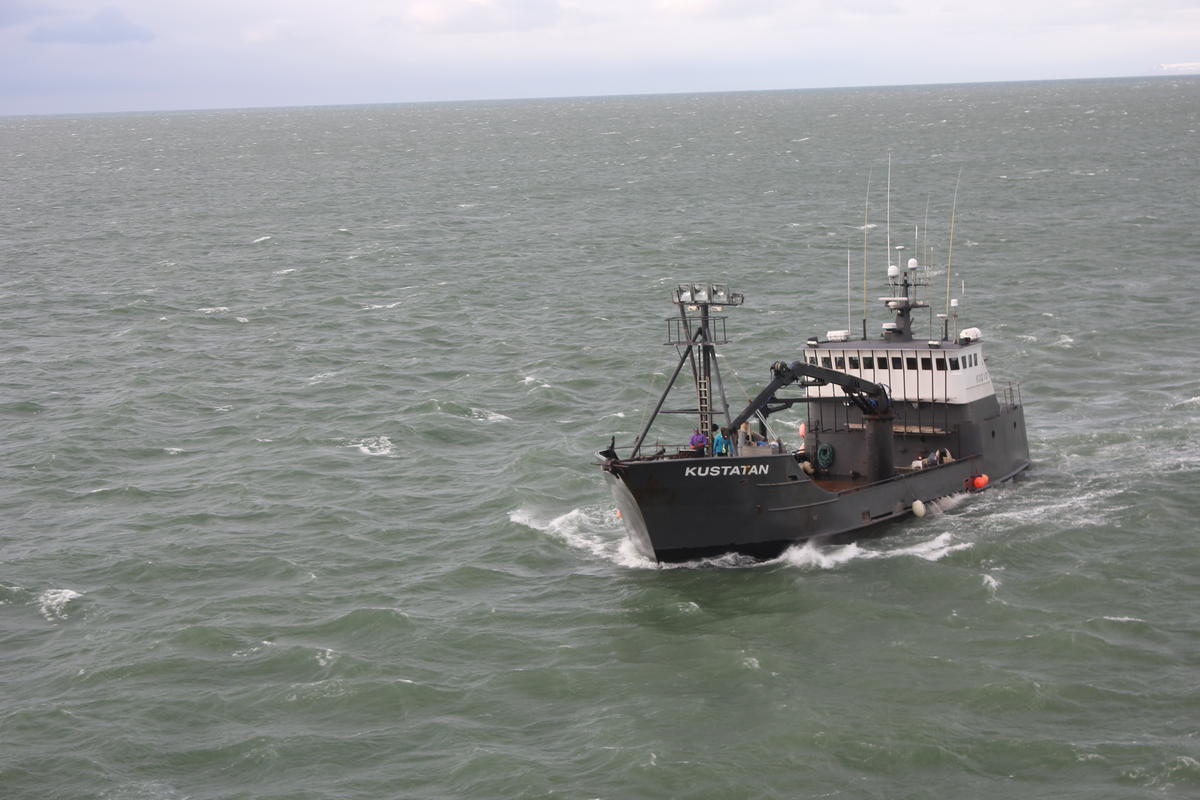
Bristol Bay’s sac roe herring fisheries are almost finished. In just under two weeks seiners harvested their quotas in Togiak and Port Moller. The gillnet harvest remains open for the one gillnet boat fishing the quota in the Togiak District.
The Togiak herring fishery closed to the purse seine fleet on May 2. The quota for seiners was 16,829, and took 16,490 tons. The processors and their fleets had the capacity to take the quota in about a week, but wind, rain and snow stretched out the fishing over a week and a half.
“It was windy and sloppy,” Warner Lew, fleet manager for Icicle Seafoods, said. Lew also owns Deckhand Seafoods, which smokes, cans and sells Togiak herring. “Spotter pilots had a rough time flying. A lot of fish were caught with the sounders, not by the usual aerial spotting. It was tough fishing conditions.”
The average roe recovery was reported at 11.4 percent. The overall size of the fish caught this year was 366 grams.
“The long term average for a seine caught herring is 370 grams, and gillnet is 400 or better,” Lew said. “This year the average was way smaller because of the high numbers of five, six and seven year old [fish]. The market seemed to be more forgiving this year, probably due to the shortfall in Sitka, and the roe percent was just fine.”
In April, the Sitka sac roe herring fishery closed 8,300 tons short of its quota. It is too early to know what price the herring will fetch at market or the base price fishermen will be paid, but Lew is optimistic that the low harvest in Sitka could increase the demand for Togiak herring.
Another unusual factor in this year’s Togiak herring fishery was colder than average water temperatures, which may have contributed to the herring staying in deeper waters, further from shore. Alaska Department of Fish and Game area management biologist Tim Sands said that water temperatures usually rise above 3 degrees Celsius during the fishery.
“That’s when the spawning starts happening and the season really gets going,” Sands said. “This year, there never got to three degrees. The spawning didn’t really happen like we normally see it, and I think that is part of the reason.”
Despite the tough fishing conditions, Sands said the biomass was healthy.
The Port Moller sac roe herring fishery opened briefly on Friday and Saturday. The 39-hour fishery harvested about 1000 tons of herring.
“This is what we were shooting for based on the biomass we observed,” Bob Murphy, ADF&G area management biologist on the Alaska Peninsula, said. “The fleet, they were happy with the quality and didn’t want to stick through the storm that was occurring. Folks thought it would be best to just start moving on to get home.
Silver Bay Seafoods was the only processor in the area, and it had a fleet of six boats fishing.
Port Moller’s sac roe herring fishery closed at 11 p.m. on Saturday, concluding the sac roe herring fishing opportunities in Bristol Bay for 2018.




